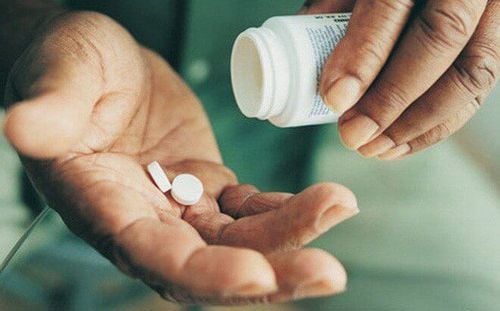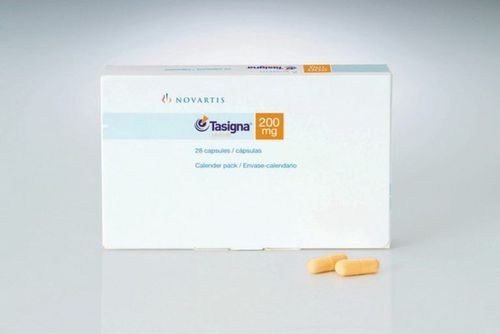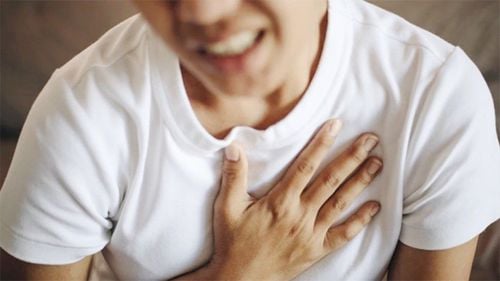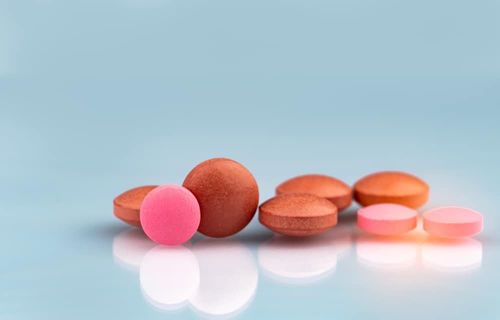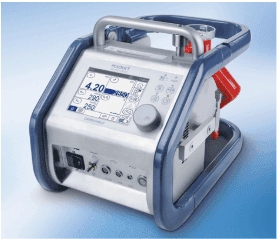This is an automatically translated article.
The article was professionally consulted by Doctor II Nguyen Quoc Viet - Department of Medical Examination & Internal Medicine - Vinmec Danang International General HospitalCardiogenic shock is a condition in which the heart suddenly cannot pump enough blood to meet the body's needs. This condition is usually caused by a serious heart attack. Cardiogenic shock is rare, but often fatal if not treated immediately.
1. Symptoms of cardiogenic shock
Signs and symptoms of cardiogenic shock include:Rapid breathing Shortness of breath Rapid, sudden heartbeat Loss of consciousness Weak heartbeat Low blood pressure Sweating Pale skin Cold hands and feet Little or no urine Symptoms of cardiogenic shock 1 heart attack:
Because cardiogenic shock usually occurs after a heart attack. So, it's equally important that you know the signs and symptoms of a heart attack:
Cramping, intermittent or continuous pain in the center of your chest that lasts for several minutes or can last for hours. Pain that radiates down the shoulder, one or two arms, back, teeth, teeth Chest pain that increases with exercise or exertion Shortness of breath, rapid breathing Sweating, cold hands and feet Sudden dizziness, nausea or vomiting Seek medical help as soon as the above symptoms appear to minimize the risk of cardiogenic shock.
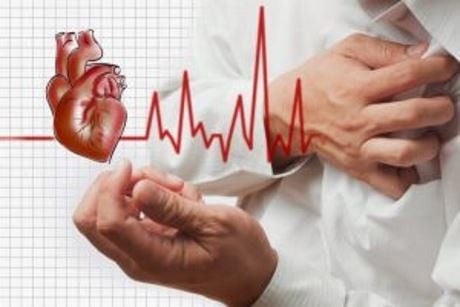
2. Causes of cardiogenic shock
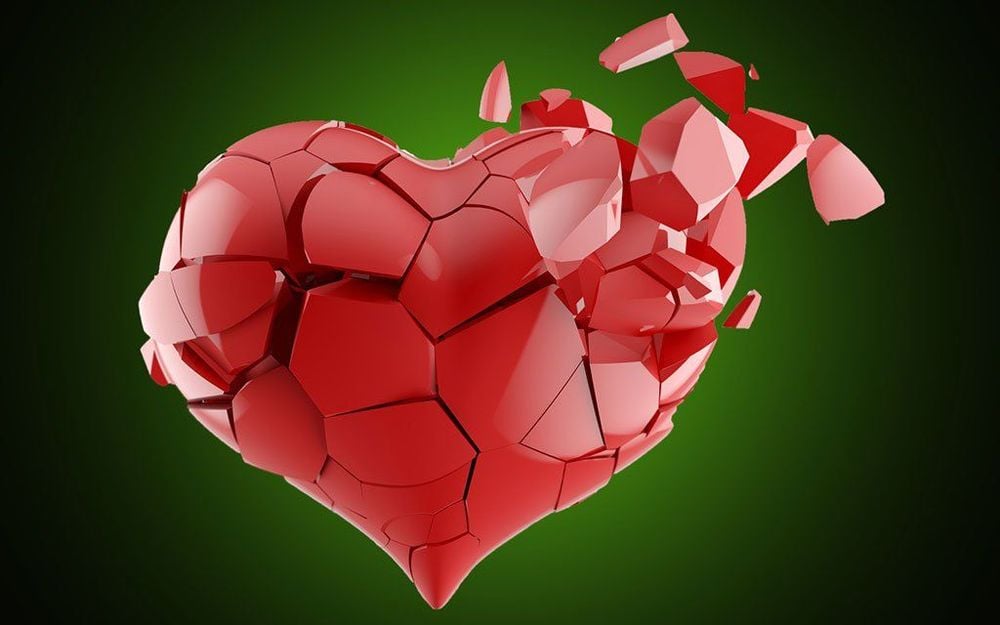
Injury to the right ventricle, which is the heart chamber that plays a role in pushing blood to the lungs for oxygen enrichment, rarely causes cardiogenic shock.
Other possible causes of cardiogenic shock include:
Myocarditis Pericarditis A weakened heart from any cause Poisoning or drug overdose that affects the heart's ability to pump blood heart
3. Risk factors
A heart attack that combines some of the following factors increases the risk of cardiogenic shock:
Old age Having a history of cardiovascular disease or a heart attack Blockage (coronary artery disease) in several major arteries in the heart People with diabetes or high blood pressure Women are at higher risk of cardiogenic shock than men
4. Complications of cardiogenic shock
If not treated quickly, cardiogenic shock can be life-threatening. Another dangerous complication is irreversible damage to the liver, kidneys and some other organs due to lack of oxygen supply.5. Prevention of cardiogenic shock

The best way to prevent the risk of cardiogenic shock is to make lifestyle changes to keep your heart healthy and control your blood pressure. These include:
Don't smoke and avoid passive smoking: After a few years of quitting, a smoker's risk of stroke drops to the same as that of the average person. Maintain a healthy weight: Being overweight increases the risk of high blood pressure, cardiovascular disease, and diabetes, leading to heart attack and cardiogenic shock. Losing weight about 10 pounds (4.5 kg) can lower blood pressure and lower blood cholesterol. Maintain a diet low in cholesterol and saturated fat: Limiting foods high in cholesterol, especially saturated fat, reduces the risk of cardiovascular diseases. Avoid foods high in trans fats. Limit alcohol and sweet foods: This can help you avoid foods that are high in energy but low in nutrients, and help maintain a healthy body shape. Exercise regularly: Exercise can help lower blood pressure, increase healthy fats (HDL), and keep your heart healthy. You can do this by maintaining 30 minutes of exercise a day with some activity such as walking, jogging, swimming or cycling. If you have a heart attack, the best way to prevent cardiogenic shock is to get to the hospital for treatment as soon as possible
6. Diagnosing cardiogenic shock
Cardiogenic shock needs to be diagnosed as quickly as in other emergencies. You'll be checked for signs and symptoms of shock, and then tested to find the cause. Tests include:
Blood pressure test: People in shock have very low blood pressure Electrocardiogram (ECG): This test is used to record the activity of electrical currents in the heart through electrodes that are attached directly to the heart. on the chest wall and extremities. If you have damage to your heart muscle, it will show up on your electrocardiogram, which helps your doctor make a quick diagnosis and make accurate treatment decisions. X-ray tests: Through X-ray images, the doctor can see the shape and size of the heart, blood vessels around the heart, or effusion in the lungs Blood tests: Blood is taken to check for damage internal organs, an infection or a heart attack. Echocardiogram: The sound waves of the heart are reflected on the screen of the ultrasound machine to help assess the extent of damage after a heart attack Cardiac catheterization: Cardiac catheterization is also known as coronary angiogram (angiogram). ). The procedure is performed by inserting a catheter into the heart from an artery in the wrist or thigh, and injecting contrast material to detect narrowed or blocked blood vessels. From there, the doctor will place a stent (stent) to open up the blocked artery, helping the heart recover function.
7. Treatment of cardiogenic shock
Treatment of cardiogenic shock focuses on minimizing the lack of oxygen in the heart muscle and other important organs in the body.
7.1 Emergency patient first aid
Most people with cardiogenic shock who need extra oxygen are connected via an oxygen ventilator. In addition, the doctor will also give medications and fluids through an intravenous (IV) line.
7.2 Medicines for cardiogenic shock
Fluids, plasma given through an intravenous line, and drugs for cardiogenic shock have the effect of increasing the heart's pumping ability.
Inotropic agents : You may be given medications to improve heart function, such as norepinephrine (Levophed) or dopamine, until other treatments start to work. Aspirin: In an emergency, aspirin is prescribed to reduce blood clotting so blood can flow through narrowed arteries. Self-administer aspirin on the advice of your doctor when you have symptoms of a heart attack while waiting to go to the hospital. Thrombolytics: Also known as clot-busters or thrombolytics, they help dissolve blood clots, increasing blood flow to the heart. The sooner thrombolytics are used after a heart attack, the better your chances of survival. Certain medications, such as alteplase (Activase) or reteplase (Retavase) are indicated only when a cardiac catheterization is not possible. Antiplatelet drugs: Medicines similar to aspirin are prescribed to help prevent new blood clots from forming. Some commonly used medications, such as oral medications such as ticagrelor (Brilinta), clopidogrel (Plavix), and platelet glycoprotein IIb/IIIa receptor blockers such as abciximab (Reopro), tirofiban (Aggrastat), and eptifibatide (Integrilin), administered intravenously. Other blood thinners: Other drugs such as heparin work to reduce the chance of blood clots forming. Intravenous or other parenteral heparin is usually given for the first few days after a heart attack. 7.3 Some Procedures
Procedures for cardiogenic shock that typically focus on restoring cardiac circulation include:
Angioplasty and stenting: If an obstruction is found during catheterization During cardiac catheterization, the doctor can insert a long, thin tube (catheter) equipped with a special balloon from an artery in the wrist or thigh, to a blocked artery in the heart. Once in place, the balloon is briefly inflated to widen the blocked lumen. Coronary stent (stent): A metal mesh stent is inserted into an artery to keep the lumen open over time. In most cases, your doctor will place a slow-release drug-eluting stent to reduce re-narrowing of the artery. Intra-arterial balloon pump (IABP): The doctor inserts a balloon pump in the aorta. The balloon is periodically inflated and deflated in the aorta, helping blood flow and reducing the burden on the heart. Mechanical circulatory support: Several newer methods of ballooning are being used to improve blood flow and oxygen delivery to the body, such as extracorporeal membrane oxygenation (ECMO). 7.4 Surgery
If medications and medical procedures don't work to treat cardiogenic shock, your doctor may recommend surgery.
Coronary artery bypass surgery: This method usually uses a piece of artery or vein elsewhere to "bridge" from the artery before the occlusion to the back of the occlusion to reestablish coronary artery circulation. Your doctor may recommend this surgery when the heart has had time to recover from a heart attack. Sometimes, bypass surgery is done in an emergency. Cardiac surgery: Sometimes an injury, such as a tear in one of the heart's chambers or damaged heart valves, can cause cardiogenic shock. Surgery can help correct these problems. Ventricular assist device: A mechanical device that can be implanted in the abdomen and attached to the heart to help pump blood. This approach extends the life and improves the lives of some people with end-stage heart failure who are waiting for a new heart transplant or are unable to receive a heart transplant. Heart transplant. If the heart is so damaged that it is not compatible with any treatment, a heart transplant may be a last resort.
Please dial HOTLINE for more information or register for an appointment HERE. Download MyVinmec app to make appointments faster and to manage your bookings easily.





